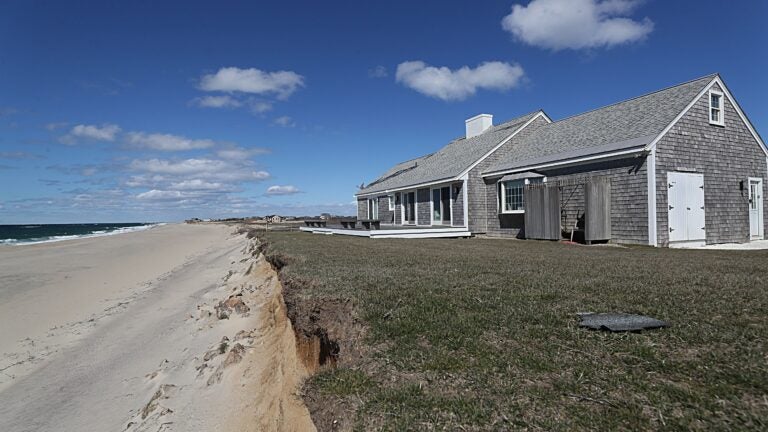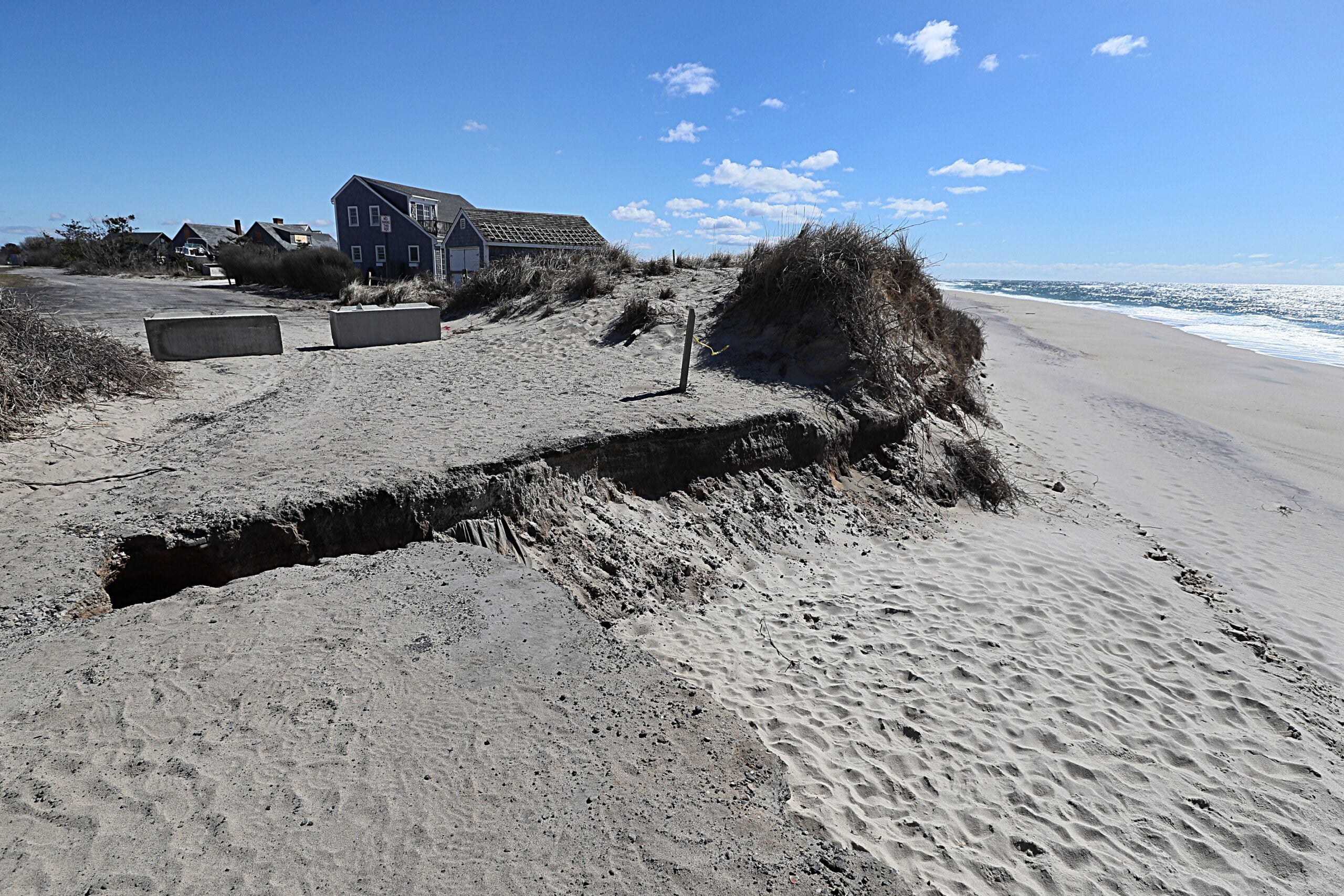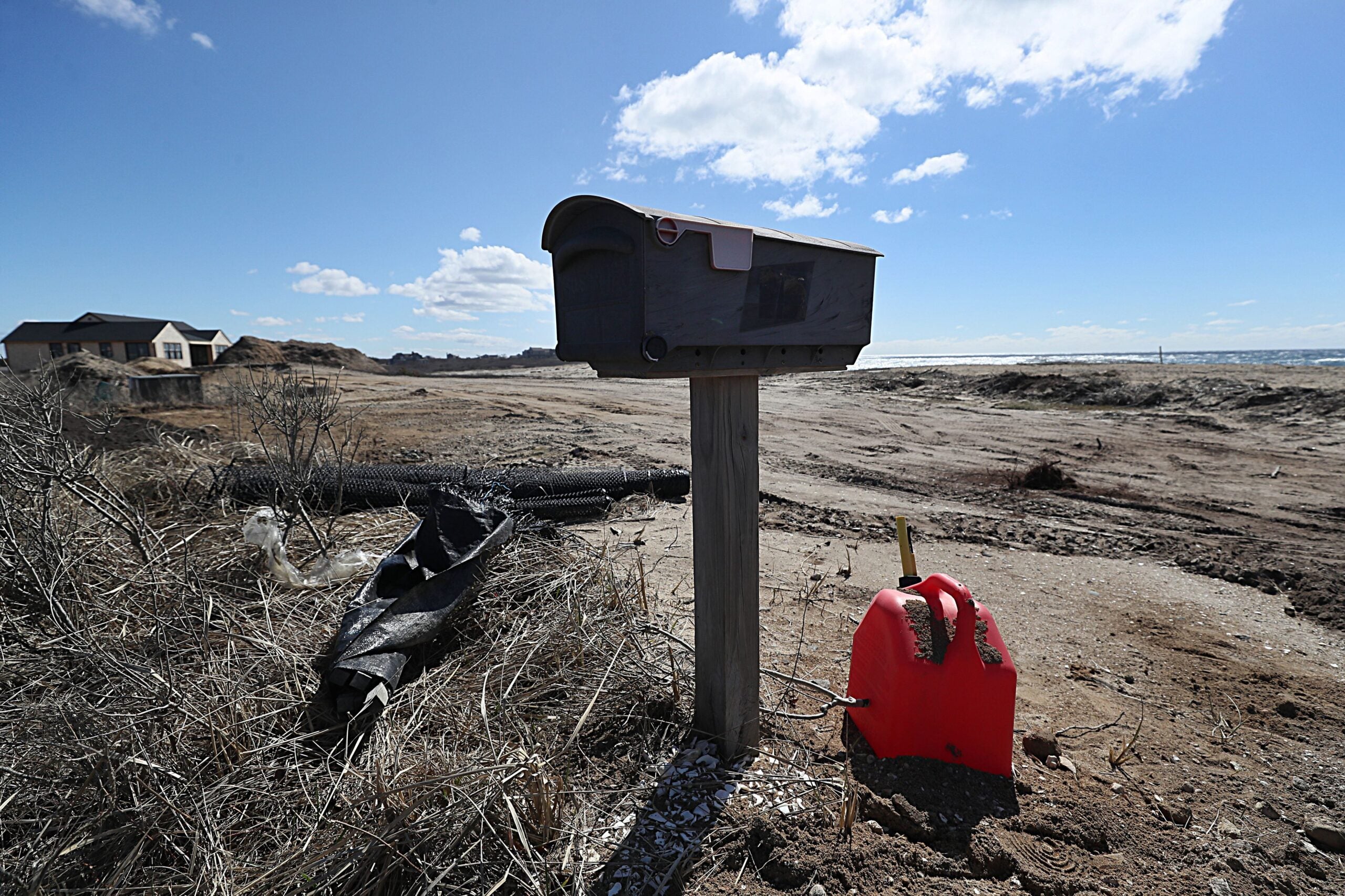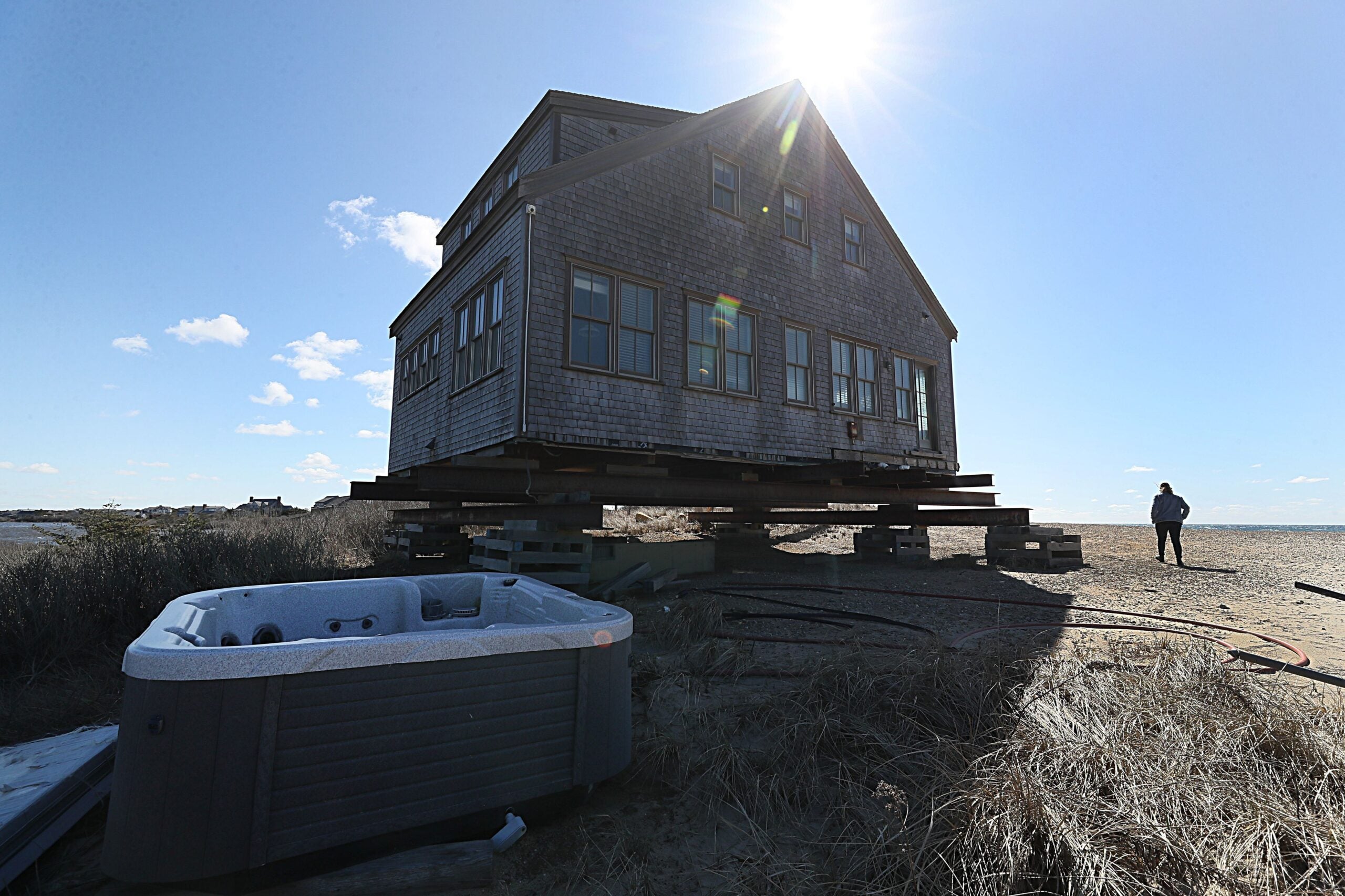– Messenger photo by Bill Shea
People chat on the stage of the newly renovated Decker Auditorium at Iowa Central Community College Friday during the open house for the auditorium and the new Center for Performing Arts, which is adjacent to it.
Music could be heard within minutes after the doors opened for the first time Friday at the new Center for Performing Arts and renovated Decker Auditorium on the Iowa Central Community College campus.
Elle Clark, an Iowa Central student who plays Belle in the upcoming musical “Beauty and the Beast,” stood on the auditorium stage and sang “Home,” one of her numbers from the show.
Over in the new marching and concert band room, a percussion ensemble entertained guests.
And upstairs in the new Center for Performing Arts, people filled a corridor to listen to a singing group.
Friday’s event marked the public debut of the facilities following a nearly two-year-long construction project that cost about $14.5 million.

– Messenger photo by Bill Shea
Elle Clark, an Iowa Central Community College student who plays Belle in the upcoming spring musical performance of “Beauty and the Beast” sings one of her songs from the show on the stage of Decker Auditorium Friday.
“We pulled off quite a miracle,” college President Jesse Ulrich said.
“Our community believes in the fine arts,” he said.
The Ambassadors from the Greater Fort Dodge Growth Alliance conducted a ribbon cutting to mark the debut of the facilities.
“This is something that will not only improve the lives of the students here at Iowa Central, but will be truly a gem for the community and the families in the community for generations to come,” said Matt Johnson on behalf of the Ambassadors.
Teresa Jackson, theater director at Iowa Central, handled the golden-colored scissors to snip to the green ribbon.

– Messenger photo by Bill Shea
A percussion ensemble plays Friday evening during the open house for the new Center for Performing Arts and the renovated Decker Auditorium at Iowa Central Community College.
“Our team is overwhelmed with gratitude,” she said. “Thank you beyond measure.”
Ulrich thanked the Iowa Central Board of Trustees, the Iowa Central Foundation, the college’s music and theater faculties, OPN Architects of Des Moines, and general contractor Klinger Construction, of Sioux City, and the local subcontractors for their work on the project.
The facilities were opened for self-guided tours after the ribbon cutting.
Decker Auditorium was built in the early 1970s. Very little in the way of upgrades were done to it since then.
The auditorium was essentially gutted. Then new electrical, lighting and sound systems were installed. New seating was put in. The entire building was made accessible in compliance with the Americans With Disabilities Act.

– Messenger photo by Bill Shea
Teresa Jackson, theater director at Iowa Central Community College, snips a green ribbon Friday to mark the debut of the new Center for Performing Arts and renovated Decker Auditorium on the campus.To the left of her are Dianne and Don Decker, who donated $1 million for the project. The auditorium was named after his parents, Dale and Donna Decker, several years ago. To the right of Jackson is college President Jesse Ulrich.
And those sitting in the balcony will now have access to bathrooms on that level for the first time.
Several years ago, the auditorium was named for Dale and Donna Decker. Their son and daughter-in-law, Don and Dianne Decker, donated $1 million for the auditorium project.
Ulrich publicly thanked the Deckers Friday for their lead gift to the effort.
He said Decker Auditorium is the most public building on the campus. He said 50,000 people go through it every year.
With about 1,200 seats it remains the largest venue in the area.
The new two-story Center for Performing Arts was built onto the south side of Decker Auditorium.
The first floor has:
• A large room where the marching and concert bands can practice.
• A shop for building theatrical sets
• An instrument and ensemble room
• Two dressing rooms directly behind the Decker Auditorium stage
• A drama and theater room
• Small rooms where musicians can practice
• Faculty offices
Upstairs there are two classrooms, a large music classroom and a conference room.
For several months, the Property Practitioners Regulatory Authority (PPRA) has warned estate agents engaging in undesirable business practices that they are in contravention of section 63 and regulation 35, read with section 62 of the Property Practitioners Act (PPA).
Section 63(1) of the PPA states that arrangements in which a Home Owners Association, for example, receives money or another form of reward for providing an advantage to one agent over the other or excluding another agent is an undesirable business practice.
ALSO READ: What tenants should know about renting
While several agents were reported, the PPRA’s investigation and enforcement department seemed to drag its heels in conducting actual investigations, leading many to assume the threat was empty.
That’s changing as the first volley of inspections was conducted at estate agencies marketing properties at an estate in Pretoria, with several agents receiving compliance notices and R5 000 fines.
“This undesirable practice is not only anti-competitive but untransformative, which is misaligned with the objectives and aims of our legislative mandate. We urge agents to stop participating in these practices, and for those who don’t, we will expand the scope of these investigations in the new year”, said PPRA acting CEO Thato Ramaili.
What can the PPRA do?
In the notice, the authority states that failure to cease these undesirable business practices constitutes a breach of the code of conduct applicable to property practitioners, which failure shall constitute sanctionable conduct as contemplated under section 62(1)(e).
Impose a fine
The PPRA adjudicators have powers bestowed on them as per section 30(7) of the Act to impose a fine or any order under the circumstances. The penalty in this case is R5 000 payable to the authority.
Revoke your FFC
Further note that the PPRA has, in terms of section 62(3) of the Act, the authority to withdraw your Fidelity Fund Certificate, impose a fine as determined by section 29(1)(a) of the Magistrate’s Court Act, 32 of 1944 and a reprimand after following a due process as outlined in sections 3 and 5 of the Promotion of Administrative Justice Act, 3 of 2000.
Name and shame
The PPRA is required by section 62(3)(c) of the Act to publish your name and transgressions on its website if you are found guilty of the sanctionable conduct as prescribed by section 62 of the Act.
“While a R5 000 fine might not seem much to certain agents, and they may not care whether their transgression is published on the PPRA website, what should be of serious concern is the fact that the PPRA adjudicators may well withdraw an agent’s FFC,” said Jan le Roux, the CE of Real Estate Business Owners of South Africa (Rebosa).
Prosecute HOAs
In instances where HOAs act as property practitioners, they also have to register as such and could be prosecuted for participation in undesirable practices in terms of the regulations.
ALSO READ: Fiduciary duties of sectional title trustees

On an island where waterfront homes are usually reserved for the wealthy few, word that a lovely seaside retreat was on the market for just $600,000 — a price that seemed to be missing a zero — raced across Nantucket this winter.
Perched on a grassy dune on the island’s southern coast, the shingled ranch-style home featured a new mahogany deck with a perfect view of the waves.
A little too perfect, it turns out. Those waves have gotten closer, much closer, in the past year, gnawing away at the beach and leaving only a few fragile feet of backyard.
The 2,625-square-foot property on Sheep Pond Road was first listed in September for nearly $2.3 million, still below the median sale price of $3.2 million on Nantucket. But after the shoreline lost a stunning 70 feet to erosion in just a matter of weeks, putting the home at imminent risk, the price plunged to $600,000 by year’s end.

A longtime visitor to Nantucket, Brendan Maddigan, who lives in New York, toyed with owning a summer home there for his young family for years. He regularly scanned the market and bookmarked links to a half-dozen properties, including the house on Sheep Pond Road. When he got an alert the price had nosedived, he submitted an all-cash offer, and in February the home was his.
From growing up in Woods Hole and now working for a real estate investment firm in New York City, Maddigan, 42, said he is clear-eyed about the risks, especially as sea levels rise and storms become more intense.
“The home is amazing. The location is amazing. And the price mitigates the risk to a good degree,” he said. “I’d like to think that it’ll be there for a while, but I was definitely aware of the risk of any particular storm causing a problem in the future.”
The Nantucket Current was the first to report the news of the sale.
Real estate agents and climate experts said the stunning price drop illustrates how much climate change has affected the housing market in coastal communities.
Properties in certain areas may be permanently devalued. Insurance companies may increasingly refuse to cover threatened homes. Some people will sell, unwilling to lose their home to the sea, and others will jump at the price, no matter how high the risk.
On Nantucket, the coastline has always been under siege, but homes falling victim to erosion will “start happening more and more,” said Shelly Lockwood, a real estate broker on the island who believes it’s crucial for potential buyers to be informed about the threats. “Homes in certain areas, homes on certain streets, are going to go down in value. That’s inevitable.”

Lockwood, who did not handle the sale of the $600,000 home, said the market has been slow to adjust to the new landscape. There are three other estates on Sheep Pond Road on the market, the least expensive of which is listed for almost $3 million. All three, she predicts, are “going to fall in” the ocean.
“But the real estate world on Nantucket is going at these at-risk houses house by house, as though they’re anomalies,” Lockwood said. “When if you talk to [the Nantucket Coastal Resilience Advisory Committee] there are literally hundreds of houses at risk.”
A number of homes on Nantucket have already been lost. Billionaire Barry Sternlicht’s beach house is slated for demolition because of significant erosion, the Current reported. A home near Maddigan’s was demolished in October after losing approximately 35 feet of dune in a matter of months. More than a decade ago, another house on Sheep Pond Road lost its battle with the tides, and parts of the road were washed away multiple times — including in 2003, 2010, and 2021.
When Lynn Tidgwell purchased the Sheep Pond Road property in March 2021 for $1.65 million, according to town records, it was more than 100 feet from the top of a coastal bank. A geological study estimated the home would last at least two decades, if not more, at the current rate of erosion.
“I took the gamble due to the magnificent beauty of the location,” Tidgwell said.

But over the next two years, the land around the house was whittled away. In need of more space for her family, she decided to sell it in July after losing about 15 feet of backyard. Hurricane Lee swallowed up another 20 feet in September, and an incredible 70 feet was lost between then and December, she said.
“This rate of erosion was not typical,” Tidgwell said by email. “Therefore, I dropped the price significantly in the knowledge that any prospective buyer was taking a risk.”
Leah Hill, Nantucket’s climate resilience coordinator, said some property lines on the island are now fully underwater.
If the town fails to reduce coastal risks from now through 2070, nearly 2,400 structures are at risk from coastal flooding and erosion, with annual damages estimated at $3.4 billion, Hill said by email.
Based on these findings, Nantucket developed a coastal resilience plan, which includes educating homeowners about ways to protect their properties.
Many prospective buyers, including Maddigan, contact Hill about risks associated with a property, and while she does not offer real estate advice, she shares the “most up-to-date data regarding historic, current, and future projections for flooding and erosion.”

Sea levels have risen eight inches between 1965 and 2019 on Nantucket, according to the plan.
Nantucket and Martha’s Vineyard have among the highest rates of beach erosion statewide, according to the Trustees of Reservations State of the Coast 2021 report, which found that parts of the south coast of Nantucket have receded as much as 1,800 feet since the 1800s. Combined, the islands have lost more than 5 square miles of coastal areas from erosion since 1887.
The Federal Emergency Management Agency projects as much as 3,000 acres of beachfront on the islands are at risk of eroding by 2050, according to the report.
“Billions of dollars of coastal real estate at-risk [on the islands] will impact an economy and a way of life that is inextricably tied to the coast,” the report said.
Some real estate agents are confronting that risk head-on. Fisher Real Estate created a blog outlining resources, such as flooding and erosion maps, and will also recommend home inspectors, structural engineers, and insurance companies, said agent Sarah Holmes.
Holmes said she was not “totally shocked” by the price drop to $600,000 given the “substantial” amount of erosion, but others could hardly believe the reduction.
“The phones truly went off the hook,” she said.
After growing frustrated by seeing at-risk properties selling for much more than she believed they were worth, Lockwood worked with Hill and Isabelle Perkins, a licensed real estate instructor, to develop instruction on coastal resiliency and climate risks that will be included in a continuing education class for local agents starting in June.
“If we get known as people who will just sell anything, that hurts all of us,” Lockwood said. “We have a fiduciary duty to our clients and we really needed to be giving them this information.”
At some point, home insurance claims will become so high that the “industry is going to rethink insuring homes in certain areas,” she said.

In other parts of the country, that has already begun, said Alice C. Hall, a senior fellow on energy and the environment at the Council on Foreign Relations.
State Farm won’t accept new applications for policies in California because of wildfires, and Allstate has also pulled back, she said. Several major insurance carriers have left states, including Florida and Louisiana, because of flooding and storm risks.
Climate change is “disrupting the property insurance market” and will at a greater scale as extremes grow, she said.
“The question becomes, first of all, will anyone pay those higher premiums, and then second, do they even want to do the business at all?” she said. “That will change the dynamics of the real estate market.”
And there are limits to what homeowners can do to protect to their properties. Massachusetts prohibits solid reinforcements such as seawalls and breakwaters, said Jen Karberg of the Nantucket Conservation Foundation.
“Building dunes, putting out sand, all that kind of stuff is usually allowed,” as long as the homeowner gets permission from the Nantucket Conservation Commission, Karberg said. “Anything you do within 100 feet of a shoreline or a dune has to be approved.”
A high priority of Nantucket’s coastal resilience is a program to “retreat” from the shoreline by, for example, relocating homes, Hill said. Additionally, some owners have raised their houses, installed flood vents, and planted vegetation.
Maddigan said he bought a typical insurance policy, so the property is protected the same way that a house inland is. He is looking into ways to protect his home, such as building a small berm with dune grass, but said, “realistically” nothing will save his property from a major storm.
“I took the chance, and I hope it’s long enough that my children have great memories of being there,” Maddigan said. “And who knows, maybe we’ll get lucky.”
Loading…
There’s a widely held belief that real estate prices will, inevitably, only rise higher and higher. There are, however, long periods when that maxim is decidedly not the case.
Toronto is a prime example. After a surge in the 1980s, the Toronto market peaked in 1989 and didn’t regain that high until 2002 – more than a decade later. A 1995 peak in Vancouver was the high-water mark until eight years later. In the United States, it took a decade after the 2006 peak before that level was seen again.
Each example is different yet each shares central elements, from burst bubbles after manias to the gyration of interest rates and economic woes. What’s clear is real estate can go sideways for a long time, even if everyone believes the natural direction is up.
As Canada works to build a path to housing affordability, the most important thing is new supply – a lot of new homes. But just as important is changing the culture, the mindset that prices are destined to escalate.
Housing has long been expensive but the situation is now extreme. Five years ago, about 60 per cent of households could afford a condo. Last year, it was less than half. And that’s for a condo.
After many years of dizzying gains in the price to buy or rent a home, it’s become widely clear that higher and higher isn’t ideal and comes with many costs.
How to restore some semblance of affordability has shot to the centre of the political debate. This week, Canada Mortgage and Housing Corp., which has called for millions of new homes, held a conference on the question in Ottawa. The Globe on Wednesday illuminated how we got here in a series of charts, from record-low rental vacancies to the way-too-long time it takes to get new housing approved and built.
Many new homes are needed, yes. As this space showed last week, a burst of construction in booming Austin, Tex., has helped reduce the price to rent.
The shift in entrenched philosophy is also necessary. We need to rein in the housing market mindset that up is good, so pervasive in North America.
The mentality leads to speculation, starting with many families betting on the ever-rising value of their home as a pot of retirement savings. Generation Squeeze, an advocacy group for younger Canadians, puts it this way: “break the addiction to high home values.”
The celebration of higher home prices is deeply ingrained. Ownership in Canada peaked in 2011 at almost seven out of 10 households. Almost all political leaders own their homes and many are landlords. That’s the reason that as things started spinning out of control in the 2010s, blame was first cast on factors such as foreigners or investor speculation without grappling with the real problem: not enough housing.
In each example of real estate markets going sideways for a long time, Toronto, Vancouver, the U.S., it was always considered bad news. The Wall Street Journal lamented Austin’s shift from “America’s hottest housing market” to “running in reverse.”
The bigger goal is to rein in prices, bring them closer to people’s incomes.
The Teranet-National Bank house price index shows the price of housing rose 4.2 per cent annually from 2000 to this year, excluding inflation. Household incomes, according to Statistics Canada, rose by far less, about 1.2 per cent a year from 2000 through 2021.
The goal of a steady surge of new supply would be to establish a lasting buyer’s market. Critics of new supply will often say it won’t ease prices but big housing investors specifically warn shareholders that “competition for residents” and an “oversupply” of homes will affect the prices they charge.
Instead of hoping and cheering prices will someday soon recoup and exceed previous highs, the target has to shift to an extended, and welcome, period of nominal gains. If home prices this century had risen at only the rate of inflation, they would be less than half of what they are – and at levels last seen in 2006. Beyond a return to affordability, a market that offered such nominal returns is what would undercut and eventually end housing speculation.
Decades of culture and policy got us here. It will take time to restore affordability. It will take time to change the culture. But as Canada sets the initial foundations to allow for many more new homes, it is starting on the path to affordability.
I wasn’t the best or worst maths student, but managed an A or B grade, according to years 8 and 9 report cards recently rediscovered atop my wardrobe.
One teacher suggested I talked too much.
Touche. Some would say that hasn’t changed.
But the formula for home ownership is becoming harder than algebra.
When I graduated high school in 2000, the average annual income in WA was $33,620 and the median house price was $170,000.
Now, 24 years later, house prices have more than trebled to be up 305 per cent while income is up 190%.
Interest rates were 8 per cent of a much lower base.
Even if you subtract the smashed avo from your weekend routine, none of that adds up to good news for the next generation.
Our neighbours put the For Sale sign up last week, making the most of the property cycle to pursue a new renovation dream.
But in between mowing the lawn and sweeping the driveway for the next home open, they echoed the growing concern of many parents: how are our kids ever going to afford to move out at these prices?
I wondered out loud if Australia has become a nation where home ownership depends on generational wealth.
Our parents worked long and hard to climb their first rung of the property ladder but by the time it was our turn, that meant they were able to help.
My husband and I needed that leg up to buy our first humble abode and again, later, to upgrade to make room for a family of four.
Suburbia’s continuing price trajectory up means we’ll be able to help our children out in turn.
But what about families who missed the first step of the ladder?
How do their kids catch up now that hard work and a single income isn’t enough?
A property boom that is outpacing both wages and new builds is resulting in a new class divide, in a nation that was born out of the idea of equal opportunity no matter the circumstances you were born into.
A noble theory, not always reflected in reality.
So what’s the solution?
Negative gearing is an easy horse to flog but property investors are an important piece of the housing bubble.
I can’t understand why stamp duty isn’t under a heavier spotlight.
It’s calculated on property value, meaning the amount an average homebuyer has to pay is increasing much faster than wages.
It’s a State tax that was meant to be axed when the GST was introduced. Also 24 years ago.
Maybe that’s one part of the GST deal WA should revisit?
Or at least ensure the stamp duty-free threshold for first homebuyers keeps pace with prices too, before the great Australian dream becomes a furphy beyond their reach.
JEFFERSON CITY – Today the Missouri Department of Transportation announced the selection of two consultants to lead an environmental study of the more than 250 miles of Interstate 44 from the Oklahoma state line to the Route 100 East interchange near Gray Summit in Franklin County.
The selected consultants, Hg Consult, Inc. and Garver, will each study a stretch of the corridor, which has been divided into two sections for the purpose of the study: Hg Consult will study the stretch from the Oklahoma state line to the Route 17 interchange near St. Robert, and Garver will study from St. Robert to the Route 100 East interchange at Gray Summit.
“I-44 was completed in 1966 and serves as an important corridor for not only passenger travel but a key commercial trucking corridor in Missouri,” said MoDOT Assistant Southwest District Engineer Greg Chapman. “This study is a critical step to prepare for future projects on I-44 that will focus on improving safety and reliability in this vital east-west link across Missouri.”
The goal of the study is to update and validate the outcomes of the 2008 Purpose and Need Study and provide the opportunity for public input from stakeholders along the I-44 corridor. The study will also divide the more than 250 miles of the I-44 corridor into logical segments for further study and prioritize those segments for more detailed design and ultimately for construction when funds are available.
Missouri’s FY2024 budget from the General Assembly, signed into law by Gov. Parson, provides $20 million of General Revenue for the environmental study.
For more information on the I-44 Corridor Study, visit modot.org/forward44.
Idaho home sales are once again in the news. Unlike other parts of the country, homes continue to be bought and sold. However, the days of homes being bought or sold without a home inspection, or a tour are over. During the boom times, Idaho real estate agents made much money. Thousands left their careers taking classes and cashing in on Idaho’s housing boom.
The market has slowed down, and the mortgage market in our state and across the country has taken significant hits. Many folks who were rolling in the money have left the real estate business and the mortgage businesses.
Sold,Home,For,Sale,Real,Estate,Sign,In,Front,Of
The market has slowed down, and the mortgage market in our state and across the country has taken significant hits. Many folks who were rolling in the money have left the real estate business and the mortgage businesses.
5 Shocking Boise Home Trends That Are Impacting Home Sales
A look at five current factors that have slowed the once fast moving Boise housing market.
Gallery Credit: Kevin Miller
Economic concerns have not stopped home builders from continuing to build homes throughout the Treasure Valley. Commercial construction continues as new shopping and retail centers emerge in Star, Nampa, and Middleton.
Real estate agents get paid a commission ranging from one to three percent. If an agent represents a buyer and a seller, their commission could be as high as six percent. Six percent of a million-dollar home is a nice chunk of cash.
Home for Sale
However, the lucrative way real estate agents are being paid could change rapidly due to a not-so-well-known significant court ruling. The Wall Street Journal reports that a federal jury awarded damages of $1.8 billion against the National Association of Realtors and massive residential brokerages.
The $1.8 is only the beginning of the amount that could be paid out. The Journal says that antitrust rules allow the judge to triple the damages possibly. For many years, folks have complained about the cost of commissions and how they keep home prices elevated.
The front of the courthouse
A Bigger lawsuit involving twenty cities from Philadelphia to Miami could total forty billion dollars in damages. Idaho real estate agents have been very successful at keeping the value of their services. Online agencies have tried to flood the market to drive sales to their websites. Agents with experience who know the area are well worth their commissions’ price.
Check Out This 7 Million Dollar Home of Former NFL Great
A look at how NFL Stars live in Idaho.
Gallery Credit: Kevin Miller
10 Cities Where Homes Are Selling Faster Than Last Year
To find the housing markets where homes are selling briskly, Realtor looked at the median days on the market in the first week of October in the 100 largest metropolitan areas. Realtor compared those figures with those a year earlier. We selected only the metro with the largest decline in each state to provide geographical diversity. (Metros include the main city and surrounding towns, suburbs, and smaller urban areas.)
Gallery Credit: Kyle Matthews














